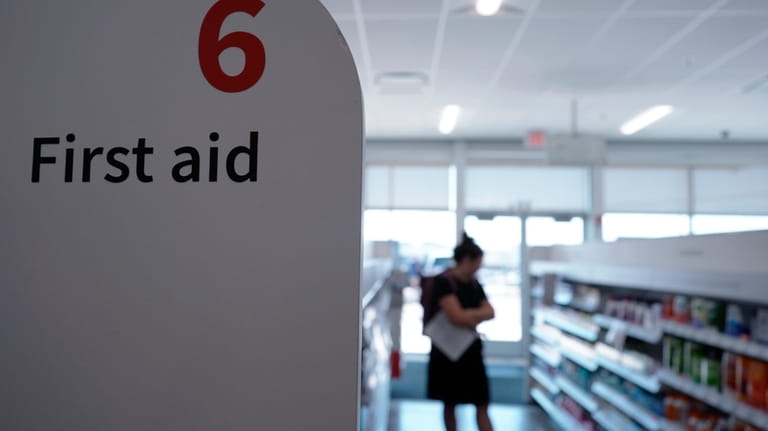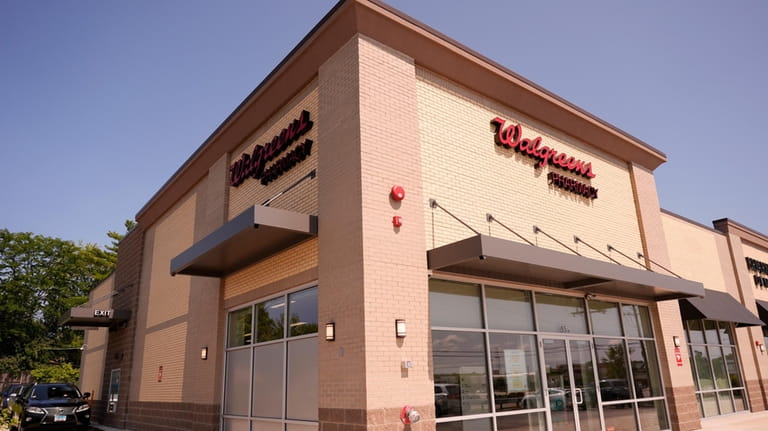American drugstores are experimenting with smaller locations and more ways to provide care as price-conscious shoppers look elsewhere.
Consumers can see Walgreens stores that are one-fourth the size of a regular location or CVS stores with all the main clinics tucked inside. If these tests are successful, the new stores could improve access to care and create a lasting connection with customers, analysts say.
“Everybody looks at health care and says, ‘Yeah, it’s a market ripe for disruption,'” said Neil Saunders, director of consulting and data analysis at GlobalData. But it’s not easy. to interrupt it.
Walgreens CEO Tim Wentworth said recently that his company could close a “significant number” of underperforming stores in the next few years. CVS Health is closing. Rite Aid has filed for bankruptcy. Thousands of independent drug stores have closed in the past five years.
Closings can leave gaps: An Associated Press analysis published in June found that urban areas with predominantly black and Latino populations have fewer pharmacies than predominantly white areas.
There are still more than 30,000 drugstores scattered around the country, but even Walgreens executives believe the market is overbuilt.
The stores have struggled with increasing competition from Amazon and lower-priced options like Walmart or Dollar Tree. They also deal with theft, increased costs and poor prescription reimbursement.

A customer checks the first aid aisle at a Walgreens drugstore in Deerfield, Ill., Thursday, July 25, 2024. Credit: AP/Nam Y. Huh
Others respond with a new look. Walgreens is testing a Chicago store with digital kiosks where customers place orders. A separate desk offers pick-up of items ordered from kiosks or online.
The company has also opened about 100 mini drug stores that focus on health and wellness and offer retail products. Walgreens began testing these stores in 2019 and plans to add more this year.
Walgreens spokesman Jim Cohn said consumer preferences are changing, and the company aims to “meet them where, when and how they want to shop.”
Saunders notes that these stores are cheaper to operate and allow the company to serve areas that don’t have enough people to support a large store.

A Walgreens drug store is seen in Deerfield, Ill., Thursday, July 25, 2024. Credit: AP/Nam Y. Huh
At one of these locations in Indianapolis, only four short aisles separate the front door and the pharmacy’s back door. Healthy snacks, vitamins, first aid kits, and the usual combination of antacids and Advil fill its shelves.
But there are no magazines and only a small selection of greeting cards and beauty products at the store, which is closed on Sundays and sits about a half-mile from a vacant Walgreens.
Customer Leonard King has visited several times. He says his orders are on time, and the store seems well-stocked.
“Being a diabetic, sometimes it’s hard to get medication,” said the 67-year-old Indianapolis resident.
Mrs. Kgosi also said that she longed to buy things similar to the toilets that can be seen in large shops.
Merchandise selection is also limited at other CVS Health stores including Oak Street Health primary care clinics. The company plans to open about 25 of these compounds this year and 11 more next year, with large and small clinics in stores.
Clinics can be staffed by primary care physicians, social workers and people who can help with insurance. They specialize in treating patients with Medicare Advantage plans, which are independent versions of the government’s health insurance program primarily for people 65 years of age and older.
CVS Health says it places clinics in areas that need primary care. It is targeting major cities like Chicago, New York and Dallas for its first launch.
“If we can invest more first for patients who need it, by increasing access, improving quality of care, we can keep patients healthy,” said company CEO Mike Pykosz.
Making it easy for patients helps build relationships between store employees and customers and can lead to repeat business, said Arielle Trzcinski, Forrester’s principal healthcare analyst.
Independent drug stores are also polishing their health care reputation. They’re expanding vaccines and trials, spurred in part by the increased business they’ve seen during the COVID-19 pandemic, said Kurt Proctor of the National Community Pharmacists Association.
Some are also expanding physician offices or specializing in diabetes care. Proctor said they’re doing what they’ve always done: adapting to the needs of the community.
“There are 19,000 (independent) stores across the country and no two of them are exactly alike,” he said.
Immersion in health is nothing new to drugstores. They started adding small clinics more than 20 years ago. CVS Health has been on the health side since it stopped selling tobacco in 2014.
About a quarter of drugstores could end up with large health clinics, especially those in densely populated areas, said Jeff Jonas, portfolio manager at Gabelli Funds. industry.
But he cautioned that the idea is still unproven.
Walgreens has closed VillageMD primary care clinics several years after it announced plans to add hundreds to its stores. Analysts say companies are learning what makes money and what resonates with customers.
One thing they know for sure: Drug stores are no longer the “easy place in America” they used to be, Saunders said.
“Basically, in the last 10 to 15 years, they’ve had no scars,” he said.
#Drugstores #traditional #business #faces #challenges